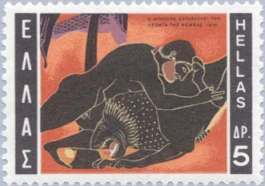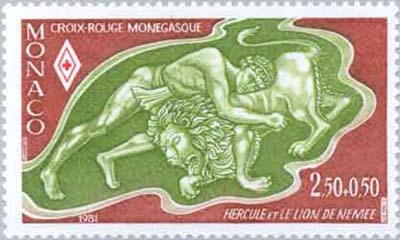.

The Nemean Lion. Eurystheus orders Hercules to kill the Nemean Lion a child of Typhon (son of Poseidon and Medusa) and Echidna. No arrow can pierce the lion and Hercules decides to kill the lion with his hands. He uses the lion skin as a cloak. The question is how he could produce a cloak from the lion skin that no weapon could penetrate? Well, he used the extremely sharp lion claws. Amphora from Psyakos, 520 BC, Breskia Museum Italy.

I cannot say when the lion became extinct in Europe, Herodotus speaks of the lions and wild bulls in his description of Xerxes’ march through Macedonia; he says the former were ferociously destructive to the camels that carried the army provisions, and then proceeds to give other details about them and to note the exact geographical range to which they were then confined. How like Herodotus Aristotle and Xenophon both confirm the existence of these Macedonian lions. There seems to be little doubt that they also existed in Greece at an early period, on Mount Olympus, Cithaeron and Parnassus; Pausanias gives some information on this subject, and the Nemean lion’s den is pointed out to this day. A well-known scholar denies that lions were ever found in the Peloponnese: he regards the Nemean story as an importation. But if the beast inhabited Thessaly, there is no reason why it should not have spread southward; indeed, I fail to see by what means it could have been kept out of the Morea. Dion Chrysostom speaks of it as extinct in Europe. Three hundred years later, at the tail end of antiquity, Themistius regrets that Thessaly can furnish no more lions for beast-shows. Norman Douglas, Birds and Beasts of the Greek Anthology, 1928
See also Stamps
See also : Greek Mythology. Paintings, Drawings
| Ancient Greece
Science, Technology , Medicine , Warfare, , Biographies , Life , Cities/Places/Maps , Arts , Literature , Philosophy ,Olympics, Mythology , History , Images Medieval Greece / Byzantine Empire Science, Technology, Arts, , Warfare , Literature, Biographies, Icons, History Modern Greece Cities, Islands, Regions, Fauna/Flora ,Biographies , History , Warfare, Science/Technology, Literature, Music , Arts , Film/Actors , Sport , Fashion --- |

